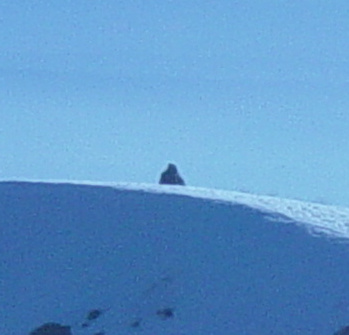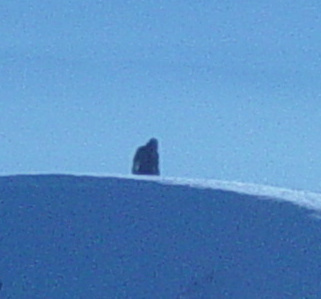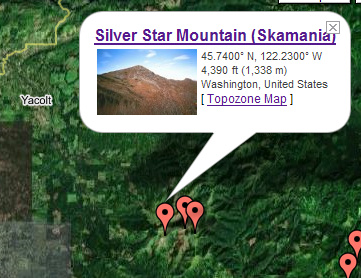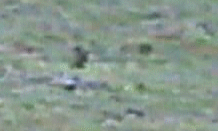From Sasquatch Bioacoustic: A site dedicated to the review and analysis of potential sasquatch vocalizations, Sasquatch Bioacoustic combines techniques from the domains of intelligence collection, audio analysis and bioacoustic studies to examine the evidence of sasquatch through their vocalizations.
The easiest way to access all of the audio analysis from Sasquatch Bioacoustic is via their YouTube page's video tab:
http://www.youtube.com/user/SasquatchBioacoustic/videos
Here are two examples of their audio analysis...
Human vs. Bigfoot whoop - a side by side comparison
Uploaded on Feb 14, 2012
Over several years of research Cliff Barrackman has collected a number of audio clips containing vocalizations consistent with other suspected sasquatch recordings. Originally available through his northamericanbigfoot.com website, a review of these clips turns up some important attributes that not only confirm, but also extend elements of the growing sasquatch lexicon. These clips include whoops, possible integrated wood knocks, falsetto shrieks, pitch changes, and a new vocal type referred to as a "yodel" (comprised of very rapid pitch changes).
Bigfoot Field Researchers Organization Sound Recordings
- 1973 Whoop-Howl from Puyallup, Washington
- 1978 Whoop-Howl from Snohomish County, Washington
- 1994 Moaning Howl from Columbiana County, Ohio
- 2004 Moaning
Howl from Mississippi
- Recordings from various states (CA, FL, PA, WA, OH, OK)
From BigfootSounds.com: Years ago, through a year-long study at the University of Wyoming, it was established that the vocalizations which we recorded were not manufactured by an alternative source, i.e., speakers, amplifiers, man. More recently, it was established, through a Crypto-Linguistic study, that the sounds we recorded have a complex language structure. And, anything with a language ‘must’ exist."
Excerpt:
“Having analyzed a tape recording of purported Bigfoot speech using accepted techniques of signal processing, the authors conclude that the means and ranges of the recorded pitch and estimated vocal tract length of the speakers indicate that the sounds were made by a creature with ‘vocal features corresponding to a larger physical size than man.’ They also conclude that the tape shows none of the expected signs of being prerecorded or rerecorded at an altered speed and hence diminish the probability of a hoax.” - Professor R Lynn Kirlin and Lasse Hertel, after a year-long university of Wyoming-based study of the Bigfoot Recordings.
"We have verified that these creatures use language by the human definition of it." - Scott Nelson, Retired from the U.S. Navy as a Crypto-Linguist with over 30 years experience in Foreign Language and Linguistics, including the collection, transcription, analysis and reporting of voice communications.
"I challenge anyone to make those exact same noises with the exact same pronunciation and at that speed... I don’t think Homo sapiens can make all of these noises and in this fashion. I’ve heard and practiced a lot of known human language sounds and vocalizations and these don’t fit any of them and I can’t make these noises. One example of this is that the ‘whistling’ noises they make sound to me like they are coming from the throat. I don’t know any human who can do that, though with practice someone might??? [Sound analysis of the whistles shows they are harmonic and do not originate at the lips, as would an ordinary human whistle. AB] This (that the noise is not human) does not rule out that it is language. The vocalizations seem to have some elements of language to me, i.e. certain repeated phoneme patterns and a certain organization to the chattering." - Human Sound Expert, Nancy Logan
Regarding her qualifications she writes:
I’ll give you some of my ‘qualifications’ to study these sounds…we (my twin sister and I) have what is known as ‘perfect pitch,’ or ‘absolute pitch,’ which permits a person to know what a note is without having any reference note played…and to be able to mimic and hear language sounds that are not of that person’s ‘native language’”The Bigfoot Sounds That Made Skeptic Ranae Holland 'Feel Electric'
“I’ve had the experience over and over of being able to reproduce the pronunciation of other languages immediately after hearing them the first time, when people who have studied those languages for years can neither reproduce them nor hear them. This talent (has) led me to play lots of musical instruments growing up…at present I play the flute, the Japanese harp (Koto) and the piano. I have a Russian friend…she thinks I’m a Russian…the bottom line is I have a very sensitive sense of hearing…”
“I am currently the only interpreter in the State of California who is court certified in Spanish/English and Japanese/English and court registered in French/ English…I also speak Russian and Italian (fluently) although not at the level of an interpreter, which is very fluent. There are only 10 people in the State of California who are currently certified in Japanese/English. There are approximately 600…who are certified in Spanish. That is out of a population of 20 million in the southern California region…about 1% of the people taking these tests pass. Besides the languages I speak, I also (have) studied others, such as Chinese and Arabic….”
Primatologist Records Big Foot's Howl In The Woods | Expedition Bigfoot https://undebunkingbigfoot.blogspot.com/2020/12/primatologist-records-big-foots-howl-in.html



















